Joshua Reynolds was born in Plympton, Devon, on 16 July 1723, and was apprenticed in 1740 to the London portrait painter Thomas Hudson. In 1749, Reynolds sailed around the Mediterranean, and ended up in Rome. There he spent two years studying the Old Masters and learning the “Grand Style”, a form of painting which promoted the idealization of the imperfect. Reynolds travelled home on land, and crossed Florence, Bologna, Venice, and Paris. He was accompanied by the young Giuseppe Marchi, who was to become his studio assistant.
In 1752, upon his return to England from Italy, Reynolds settled in London, where he remained for his career and life. He rapidly achieved success, and worked very fast, producing a large number of works. He was recommended by members of high society, and painted the Duke of Cumberland, third son of George II.
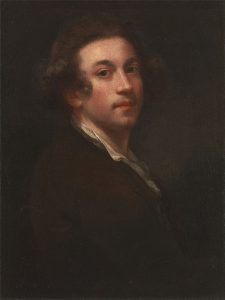
Reynolds painted full-length portraits a well as a considerable amount of smaller works. It was his belief that history painting was the superior form of art, and he hoped for its revival in England, but he accepted that portraiture was what was in demand in the circles. Near the end of the 1750s, he received five to six sitters a day when the social season was at its peak. He was particularly recognized for his portraits of children, as he placed much emphasis upon the innocence and natural grace of these subjects (his portrayals of children are my favourite as well). He liked to add an extra interest to his paintings of people to bring out their character and their role in society. His portrait of the Italian scholar Joseph Baretti was described as being a perfect record of the man. It was intimate enough without being impertinent, and the technique he used is soft and elegant. A comment I would make on this particular painting, though, is that I feel the rendering of detail is a bit lacking in the hands and the ring of the subject. It looks almost as if he were wearing gloves. However, the character of the man is very well portrayed overall.
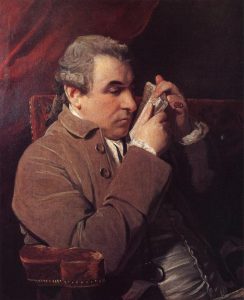
The clothing of Reynolds’ sitters was usually painted either by one of his apprentices, his studio assistant, or the specialist drapery painter Peter Toms as he did not have time to render these parts of the portraits which required less genius and mostly technical skill. Reynolds often adapted the poses of his subjects from the works of earlier artists, especially classic renaissance masters. Although he wasn’t known for his landscapes, Reynolds did paint them. He often painted the view from his house.
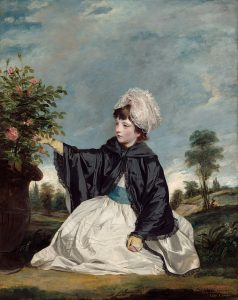
Reynolds was dedicated to is art, and often worked long hours. However, he was very sociable, as was often remarked by his peers, and was intellectually inclined. He was friends with many of London’s intelligent peoples such as Dr Samuel Johnson, Edmund Burke, Oliver Goldsmith and others. Reynolds, as he was a popular painter in his time, founded a club in 1764 thanks to his connections to famous and wealthy people. Some of the original members included his friends Burke and Goldsmith, as well as Thomas Hawkins and others.
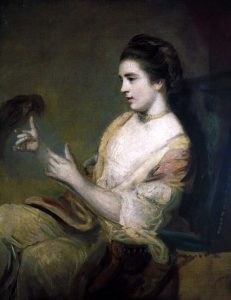
Reynolds was one of the earliest members of the Royal Society of Arts, helped found the Society of Artists of Great Britain. In 1768, he became the first president of the Royal Academy of Arts, a position he held until his death in 1792. In 1769, he was knighted by George III, the second artist ever to be so.

His Discourses, a series of lectures delivered at the Academy between 1769 and 1790, are remembered for their ‘sensitivity and perception’. Reynolds believed in the rules of taste and the importance of authority in art. “He believed that the right procedure in art could, to a large extent, be taught, if students were given facilities for studying the recognize masterpieces of Italian painting.” (Gombrich). He considered only grand and impressive works to be great art.
Reynolds died in London on 23 February 1792, aged 68.

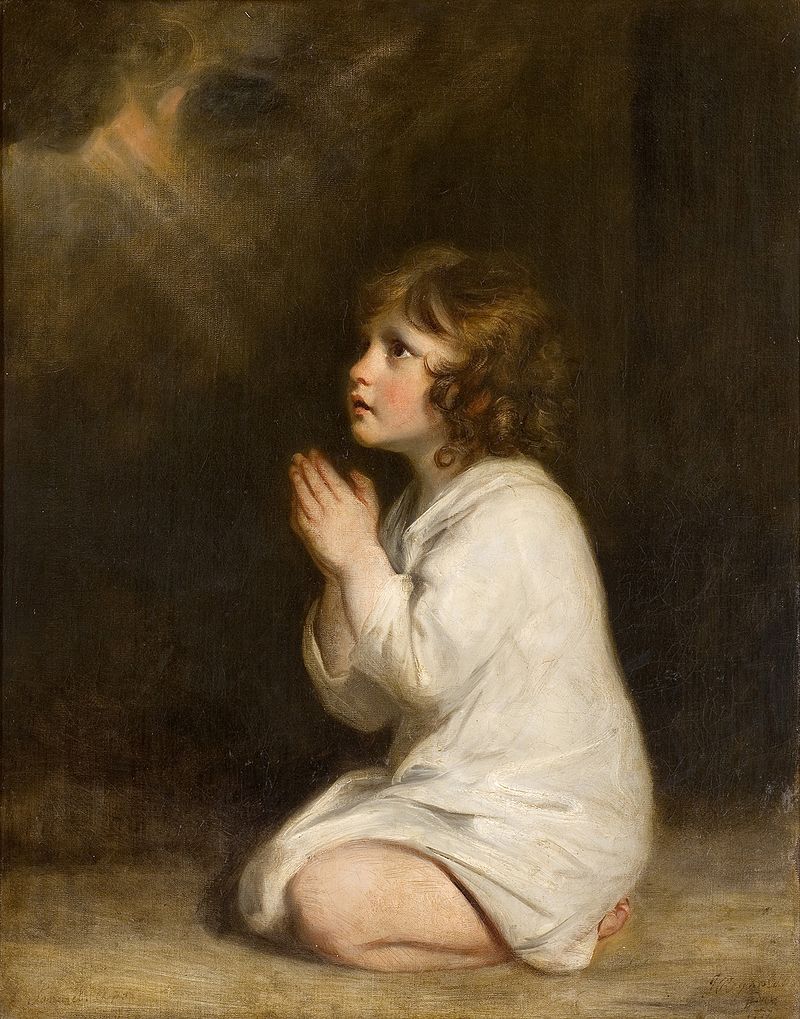
Cited:
https://theartstack.com/artist/joshua-reynolds/portrait-joseph-baretti
https://www.pinterest.ca/pin/495466396478074871/?lp=true
https://en.wikipedia.org/wiki/Joshua_Reynolds
https://www.britannica.com/place/England
EH Gombrich, The Story of Art, sixteenth edition